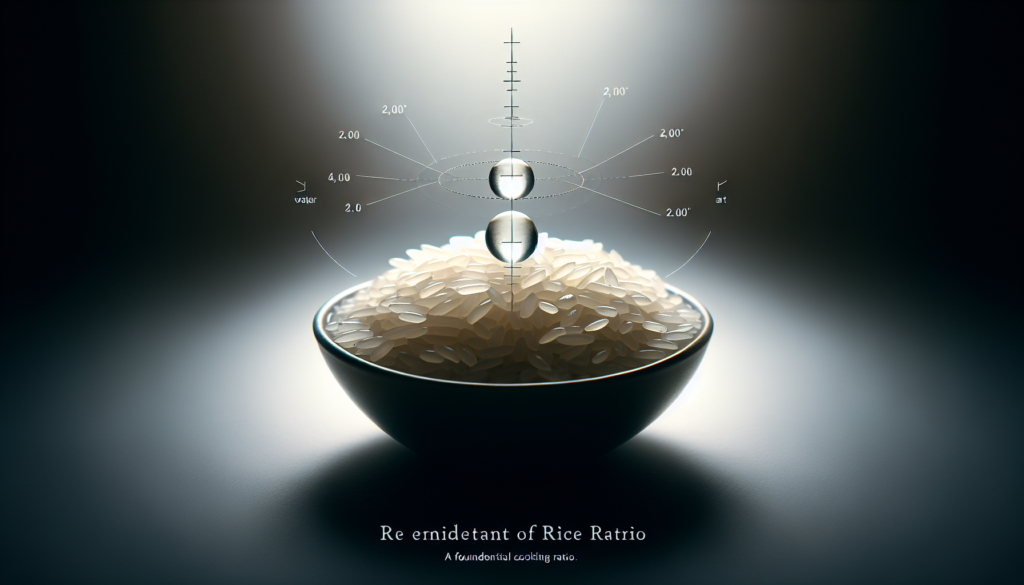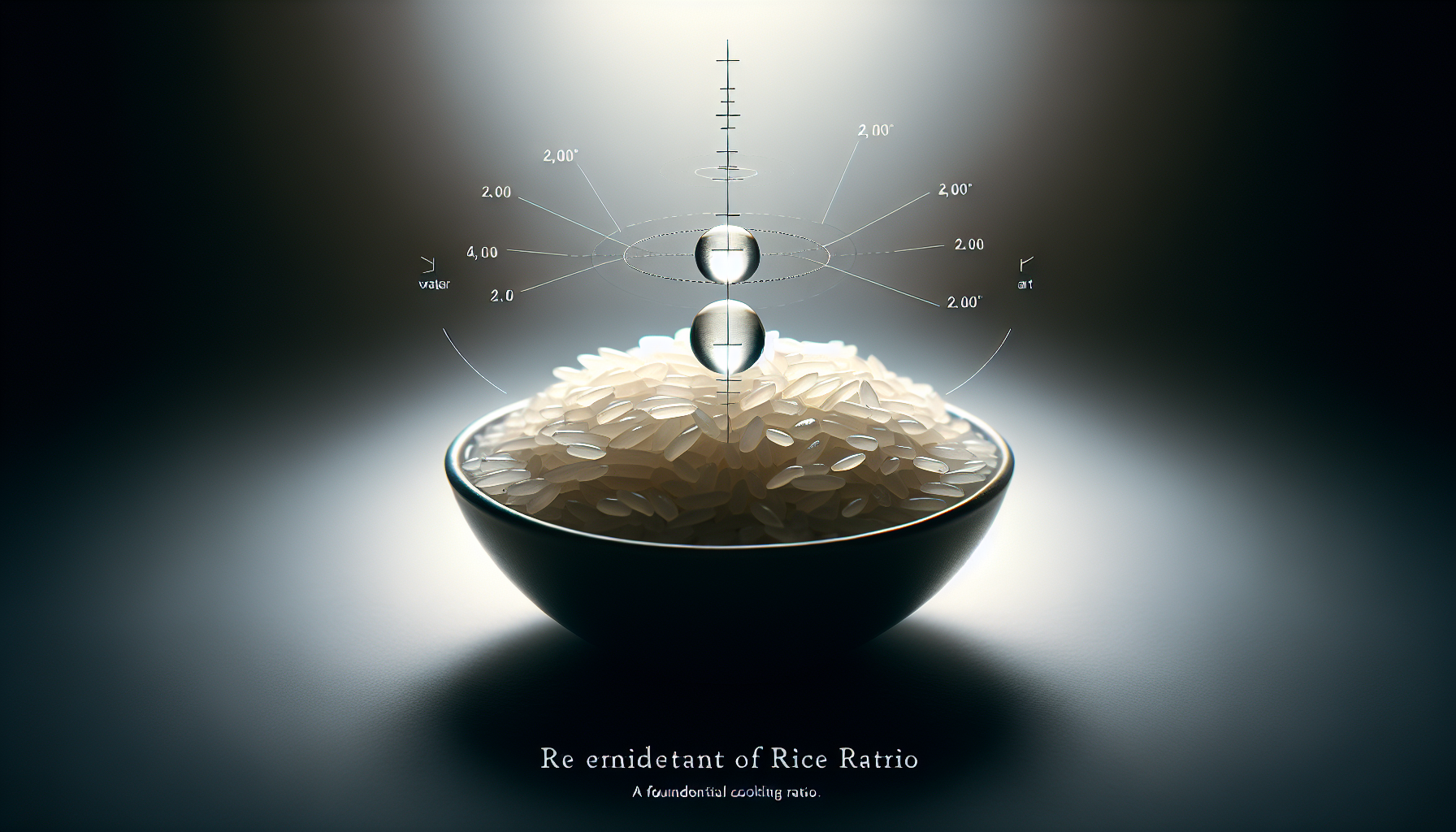Have you ever wondered how to determine the perfect rice-to-water ratio for cooking the most delicious rice? In this article, we will guide you through the process of calculating the ideal rice ratio, ensuring fluffy and perfectly cooked rice every time. Say goodbye to mushy or undercooked grains, and get ready to unlock the secret to perfectly cooked rice with this simple calculation.

Understanding Rice Ratio
Definition of Rice Ratio
Rice ratio refers to the proportion of rice to water used in cooking rice. It is a fundamental concept in the culinary world that greatly affects the texture and consistency of cooked rice. This ratio determines whether the rice turns out fluffy or sticky, and it varies depending on the desired outcome and the type of rice being cooked.
Importance of Calculating Rice Ratio
Calculating rice ratio is essential for achieving perfectly cooked rice. Using the right ratio ensures that the rice grains are cooked evenly, with the right amount of moisture to achieve the desired texture. It is a crucial step in rice preparation that can make a significant difference in the taste and enjoyment of your meals.
Factors Affecting Rice Ratio
Several factors can influence the rice ratio used in cooking. These factors include the desired texture, the type and variety of rice, the cooking method, altitude and atmospheric pressure, the quality and age of rice, and the cooking vessel used. Understanding these factors and how they affect the rice ratio can help you adjust your cooking technique accordingly and achieve optimal results.
Calculating Rice Ratio
Step 1: Determine the Desired Texture
Before you calculate the rice ratio, it is important to determine the desired texture of your cooked rice. Do you prefer firm, separate grains or a stickier consistency? This preference will guide you in choosing the appropriate rice ratio.
Step 2: Measure the Amount of Rice
Once you have determined the desired texture, measure the amount of rice you need to cook. This can be done using a measuring cup or by estimating the number of servings you wish to prepare. Keep in mind that different types of rice may expand differently during cooking, so adjust your measurements accordingly.
Step 3: Determine the Amount of Water
The next step is to determine the amount of water required to cook the measured rice. The water ratio is crucial in achieving the desired texture. You can refer to rice cooking charts or recipes that provide specific water measurements for different rice types and desired textures. Generally, the more water you add, the stickier the rice will be.
Step 4: Adjust the Rice and Water Ratio
Based on the desired texture and the water measurements, you may need to adjust the rice-to-water ratio. For firmer, less sticky rice, a 1:1 ratio is suitable. For medium-sticky rice, a 1:1.25 ratio works well. For sticky rice, a 1:1.5 ratio is recommended. For softer, stickier rice, a 1:2 ratio can be used. Adjust the ratio according to your preference and the specific type of rice you are cooking.
Step 5: Cook the Rice
Once you have measured the rice and water and adjusted the ratio, it’s time to cook the rice. Follow the instructions for your chosen cooking method, whether it’s on the stovetop, in a rice cooker, or using an instant pot. Pay attention to the cooking time and temperature recommended for the specific type of rice you are using.
Common Rice Ratios
1:1 Ratio (For Firmer, Less Sticky Rice)
A 1:1 ratio of rice to water is commonly used for achieving a firmer, less sticky texture in the cooked rice. This ratio is ideal for dishes like fried rice or pilaf, where the grains need to remain separate and firm.
1:1.25 Ratio (For Medium-Sticky Rice)
A 1:1.25 ratio of rice to water is suitable for achieving a medium-sticky texture in the cooked rice. This ratio is often used for dishes like sushi or stir-fried rice, where a slight stickiness helps the grains hold their shape.
1:1.5 Ratio (For Sticky Rice)
A 1:1.5 ratio of rice to water is commonly used for achieving a sticky texture in the cooked rice. Sticky rice is often used in traditional Asian desserts or as a side dish for various dishes.
1:2 Ratio (For Softer, Stickier Rice)
A 1:2 ratio of rice to water is used for achieving a softer, stickier texture in the cooked rice. This ratio is suitable for dishes like rice puddings or creamy rice dishes.
Adjusting Rice Ratios
Modifying the Rice Ratio for Different Recipes
While the common rice ratios mentioned above work well for specific dishes, it is essential to consider the requirements of different recipes. Some recipes may call for a slightly different rice ratio to achieve the desired outcome. It is always a good idea to refer to the recipe instructions and adjust the rice ratio accordingly.
Adapting Rice Ratio for Different Types of Rice
Not all types of rice require the same rice ratio. Different varieties of rice have different moisture levels, starch content, and cooking times. It is important to understand the characteristics of the rice you are using and make adjustments to the rice ratio accordingly. Experimentation and experience will help you find the correct rice ratio for different types of rice.
Factors Influencing Rice Ratio
Type and Variety of Rice
The type and variety of rice being cooked greatly influence the rice ratio. Short-grain rice, such as Arborio or sushi rice, tends to require more water compared to long-grain rice like Jasmine or Basmati. Brown rice may also require slightly more water than white rice due to its higher fiber content. Understanding the characteristics of the rice you are using is crucial in determining the appropriate rice ratio.
Cooking Method
Different cooking methods may require adjustments to the rice ratio. For example, cooking rice on the stovetop may require slightly more water compared to using a rice cooker or instant pot. The cooking method affects the amount of evaporation and moisture retention, which in turn affects the rice ratio.
Altitude and Atmospheric Pressure
Altitude and atmospheric pressure can also affect the cooking process and the required rice ratio. At higher altitudes, where atmospheric pressure is lower, water boils at a lower temperature. This can result in longer cooking times and may require adjustments to the rice ratio.
Quality and Age of Rice
The quality and age of rice can also influence the rice ratio. Older rice tends to require more water as it loses moisture over time. Higher quality rice may require less water compared to lower quality rice due to variations in moisture content and starch composition. Be sure to consider the quality and age of the rice you are using when calculating the rice ratio.
Cooking Vessel Used
The cooking vessel used can affect the rice ratio as well. Different pots or rice cookers may have variations in heat distribution and moisture retention, which can impact the rice cooking process. It is important to understand how your chosen cooking vessel performs and adjust the rice ratio accordingly.
Tips for Calculating Rice Ratio
Experiment and Experience
Calculating the perfect rice ratio may require some trial and error. Don’t be afraid to experiment and adjust the ratio based on your personal preference and the specific type of rice you are using. With practice and experience, you will become more confident in determining the right rice ratio for various dishes.
Use a Rice Cooker
Rice cookers are designed to simplify the rice cooking process and ensure consistent results. They often come with pre-set rice ratios for different rice types and textures. Using a rice cooker can be a convenient and foolproof way to calculate the rice ratio accurately.
Refer to Rice Cooking Charts
Many reliable sources, including cookbooks and reputable cooking websites, provide rice cooking charts that outline the recommended rice ratios for various rice types and desired textures. These charts can serve as a helpful starting point when calculating the rice ratio.
Consider External Factors
When calculating the rice ratio, it is essential to consider external factors that may affect the cooking process. Factors such as kitchen humidity, ambient temperature, and the desired resting time for the cooked rice can influence the outcome. Adjust the rice ratio and cooking process accordingly to achieve the desired results.
Conclusion
Calculating the rice ratio is a valuable skill for any home cook. Understanding the factors that influence the ratio and following the steps to calculate it accurately will ensure that your rice turns out perfectly cooked every time. Remember to consider the desired texture, adjust the ratio based on the type of rice and recipe, and take into account external factors that may affect the cooking process. With practice and a bit of experimentation, you will become a master at calculating the rice ratio and enjoy delightful, fluffy, and delicious rice in your meals.



